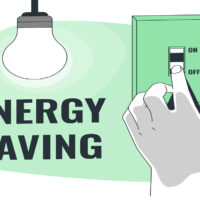LED bulbs are energy-efficient and long-lasting lighting solutions. They provide bright illumination while consuming minimal power.
LED bulbs revolutionize home and commercial lighting. These bulbs use light-emitting diodes to produce light, which makes them more energy-efficient than traditional incandescent bulbs. LED bulbs have a longer lifespan, often lasting up to 25,000 hours or more, reducing the frequency of replacements.
They are available in various colors and brightness levels, making them suitable for diverse applications. LED technology also reduces heat emission, enhancing safety and comfort. Adopting LED bulbs can lead to significant savings on electricity bills and contribute to environmental sustainability by lowering carbon footprints. Investing in LED lighting is a smart choice for both cost-efficiency and eco-friendliness.
Introduction To Led Bulbs
LED bulbs are revolutionizing the way we light our homes and businesses. They offer energy efficiency, durability, and a range of lighting options. Let’s dive into what makes these bulbs special.
What Are Led Bulbs?
LED stands for Light Emitting Diode. These bulbs use a semiconductor to convert electricity into light. Unlike traditional bulbs, LED bulbs do not rely on a filament or gas. They are more efficient and last longer.
LED bulbs come in various shapes and sizes. They can be used for different lighting needs. From bright white light to warm yellow, LEDs offer many choices. They also produce less heat, making them safer to use.
History And Evolution
The journey of LED bulbs began in the 1960s. Early LEDs were used in electronics as indicator lights. They were red and not very bright. Over the years, technology improved. Engineers found ways to produce LEDs in different colors.
By the 1990s, white LEDs were developed. This made LEDs suitable for household lighting. The efficiency and longevity of LEDs began to outshine traditional bulbs. Today, LED bulbs are common in homes, offices, and even streetlights.
Advancements continue to be made. LEDs are becoming even more energy-efficient and cost-effective. They are also being integrated into smart home systems, allowing for remote control and automation.
| Year | Development |
|---|---|
| 1960s | Early red LEDs for electronics |
| 1990s | Introduction of white LEDs |
| 2000s | Widespread use in homes and businesses |
LED bulbs are the future of lighting. Their benefits are clear and impactful.
Benefits Of Led Bulbs
LED bulbs have changed the way we light our homes. They offer many benefits over traditional bulbs. Let’s explore these benefits in detail.
Energy Efficiency
One of the biggest benefits of LED bulbs is energy efficiency. They use less power compared to incandescent bulbs. LED bulbs convert more energy into light, wasting less energy as heat. This efficiency helps save on electricity bills.
Here’s a simple comparison:
| Type of Bulb | Power Usage (Watts) |
|---|---|
| Incandescent | 60W |
| LED | 10W |
Using LED bulbs can reduce energy consumption by up to 80%. This makes them an eco-friendly choice.
Longevity
LED bulbs are known for their long lifespan. They last much longer than traditional bulbs. On average, an LED bulb can last up to 25,000 hours. This is much higher compared to incandescent bulbs, which last about 1,000 hours.
Here are some benefits of this longevity:
- Less frequent replacements
- Reduced maintenance costs
- Less waste, which is better for the environment
These benefits make LED bulbs a smart investment for any home.
Cost Savings With Led Bulbs
Switching to LED bulbs can offer significant cost savings. They are more energy-efficient and have a longer lifespan. This section will explore how LED bulbs can save you money.
Initial Investment Vs. Long-term Savings
LED bulbs may have a higher initial cost. But, they last much longer than traditional bulbs. This means fewer replacements over time.
Here’s a comparison:
| Bulb Type | Initial Cost | Average Lifespan | Replacement Costs Over 10 Years |
|---|---|---|---|
| LED Bulb | $5 | 25,000 hours | $20 |
| Incandescent Bulb | $1 | 1,200 hours | $83 |
Over 10 years, LED bulbs save money. They need fewer replacements, reducing your overall costs.
Lower Utility Bills
LED bulbs use less energy, lowering your utility bills. They are up to 80% more efficient than traditional bulbs.
Consider these points:
- LED bulbs consume less electricity.
- Reduced energy usage cuts your bills.
- Lower energy bills mean more savings.
Here’s a simple calculation:
Traditional Bulb: Power Consumption: 60 watts Usage: 5 hours/day Annual Energy Use: 109.5 kWh LED Bulb: Power Consumption: 9 watts Usage: 5 hours/day Annual Energy Use: 16.4 kWh
Switching to LED bulbs can save you over 90 kWh per year per bulb. This translates to lower energy costs and significant savings over time.
Environmental Impact
LED bulbs have a significant impact on the environment. Their use helps reduce energy consumption and waste. This makes them an eco-friendly choice for homes and businesses.
Reduced Carbon Footprint
LED bulbs use less energy than traditional bulbs. This means they produce fewer greenhouse gases. By switching to LED bulbs, you can help reduce your carbon footprint.
Here’s a comparison of energy usage:
| Type of Bulb | Energy Consumption (Watts) |
|---|---|
| Incandescent | 60W |
| Compact Fluorescent (CFL) | 14W |
| LED | 10W |
As shown in the table, LED bulbs use the least energy. This helps save electricity and lowers emissions from power plants.
Recycling And Disposal
Proper disposal of LED bulbs is important. They contain electronic components that can be recycled. Many local recycling centers accept LED bulbs.
Follow these steps for safe disposal:
- Check local recycling programs for LED bulb acceptance.
- Remove any packaging material from the bulb.
- Place the bulb in a designated recycling bin.
Recycling helps recover valuable materials and reduces waste. This makes LED bulbs an environmentally friendly option.
Types Of Led Bulbs
LED bulbs have revolutionized home lighting. They offer energy efficiency and long-lasting performance. Different types of LED bulbs serve varied needs. Let’s explore some popular types.
Standard Led Bulbs
Standard LED bulbs are the most common. They replace traditional incandescent bulbs. These LEDs fit in most fixtures. They are available in various shapes and sizes.
Standard LEDs come in:
- A-shaped bulbs: Similar to traditional bulbs.
- Globe bulbs: Perfect for vanity lights.
- Candle bulbs: Ideal for chandeliers.
These bulbs provide bright, consistent light. They consume less energy. This makes them eco-friendly and cost-effective.
Smart Led Bulbs
Smart LED bulbs bring innovation to lighting. You can control them via smartphones or smart home systems. They offer features like dimming, color change, and scheduling.
Popular smart LED bulb brands include:
- Philips Hue: Known for quality and versatility.
- LIFX: Offers bright, vibrant colors.
- TP-Link Kasa: Budget-friendly and reliable.
These bulbs enhance convenience and ambiance. They integrate with voice assistants like Alexa and Google Assistant. Smart LEDs are perfect for creating personalized lighting experiences.
| Feature | Standard LED Bulbs | Smart LED Bulbs |
|---|---|---|
| Energy Efficiency | High | High |
| Control | Manual | Smartphone/Voice |
| Color Options | Limited | Extensive |
| Cost | Low to Medium | Medium to High |
Both types of LED bulbs offer unique benefits. Choose based on your needs and preferences.
Choosing The Right Led Bulb
Choosing the right LED bulb can be a bit tricky. There are many factors to consider, such as brightness, wattage, and color temperature. These factors ensure you get the best lighting for your needs.
Brightness And Wattage
Brightness is measured in lumens, not watts. A higher lumen count means a brighter light. LED bulbs use less wattage to produce the same brightness as traditional bulbs.
Here’s a table to help you understand the difference:
| Traditional Bulb Wattage | LED Bulb Wattage | Brightness (Lumens) |
|---|---|---|
| 40W | 6-9W | 450 lumens |
| 60W | 8-12W | 800 lumens |
| 100W | 16-20W | 1600 lumens |
Color Temperature
Color temperature affects the mood of your room. It’s measured in Kelvins (K). Lower Kelvin numbers mean warmer, yellow light. Higher Kelvin numbers mean cooler, blue light.
- 2700K-3000K: Warm, cozy light. Ideal for living rooms and bedrooms.
- 3500K-4100K: Neutral white light. Great for kitchens and bathrooms.
- 5000K-6500K: Cool, daylight light. Perfect for garages and basements.
Choose the color temperature based on the room’s function. A warmer light creates a relaxing atmosphere. A cooler light enhances focus and visibility.
Stylish Lighting With Led Bulbs
LED bulbs are not only energy-efficient but also stylish. They can transform any space. Let’s explore how LED bulbs can add style to your home.
Decorative Options
LED bulbs come in many decorative options. You can find them in different shapes and sizes.
- Edison Bulbs: These bulbs have a vintage look. They add a retro charm.
- Filament LEDs: These mimic the look of old incandescent bulbs. They are perfect for a classic feel.
- Colored LED Bulbs: Available in various colors. Great for parties and events.
Decorative LED bulbs can be used in chandeliers, sconces, and pendant lights. They provide both beauty and functionality.
Modern Designs
Modern LED bulbs are sleek and stylish. They fit well with contemporary decor.
| Design | Features |
|---|---|
| Smart LED Bulbs | Controlled by apps. Change colors and brightness easily. |
| Strip Lights | Flexible and adhesive. Perfect for under cabinets and shelves. |
| Recessed Lights | Flush with the ceiling. Provides a clean look. |
Modern designs ensure that your lighting is both functional and stylish. They enhance the look of any room.

Credit: www.ikea.com
Installation And Maintenance
Installing and maintaining LED bulbs can be straightforward. With a few simple steps, you can enjoy bright, efficient lighting. Here’s how to ensure your LED bulbs last longer and perform well.
Easy Installation Tips
- Turn off the power switch before starting.
- Remove the old bulb by unscrewing it gently.
- Check the socket type to match your new LED bulb.
- Screw in the new LED bulb carefully.
- Turn on the power switch to test the bulb.
Maintenance And Care
Proper maintenance ensures your LED bulbs last longer and work efficiently. Follow these tips:
- Keep the bulbs clean by wiping with a soft cloth.
- Avoid touching the bulb with bare hands.
- Check for flickering; replace if needed.
- Use in well-ventilated fixtures to prevent overheating.
- Ensure the bulb is compatible with your dimmer switch.
| Maintenance Task | Frequency |
|---|---|
| Wipe bulbs | Monthly |
| Check for flickering | Every 3 months |
| Inspect sockets | Annually |
Popular Brands And Products
LED bulbs have revolutionized home lighting with their energy efficiency and long lifespan. Various brands offer a wide range of LED products. Knowing the top manufacturers and best-selling models can help you make an informed choice.
Top Manufacturers
Several companies lead the LED bulb market. These brands are known for their quality and innovation.
- Philips: Offers a variety of LED bulbs with advanced features.
- GE: Known for durability and extensive product range.
- Osram: Provides high-quality, energy-efficient LED solutions.
- Cree: Focuses on cutting-edge technology and excellent light output.
- Feit Electric: Combines affordability with reliable performance.
Best-selling Models
Some LED bulb models are more popular due to their features and performance.
| Model | Brand | Features |
|---|---|---|
| Philips Hue | Philips | Smart control, color changing, energy efficient |
| GE Refresh | GE | Bright white light, long lifespan, dimmable |
| Osram Lightify | Osram | Smart features, adjustable brightness, energy saving |
| Cree A19 | Cree | High CRI, natural light, durable |
| Feit Electric Omni | Feit Electric | Wide beam angle, affordable, reliable |

Credit: www.keystonetech.com

Credit: www.aarp.org
Frequently Asked Questions
What Are The Benefits Of Led Bulbs?
LED bulbs are energy-efficient and last longer than traditional bulbs. They emit less heat, reducing fire risk. Additionally, they are environmentally friendly and available in various colors and designs to suit your needs.
How Long Do Led Bulbs Last?
LED bulbs typically last between 15,000 to 50,000 hours. This is significantly longer than traditional incandescent or fluorescent bulbs. Their longevity depends on usage and quality.
Are Led Bulbs More Energy-efficient?
Yes, LED bulbs use up to 80% less energy than traditional incandescent bulbs. This makes them an excellent choice for reducing energy bills. They convert most energy into light, minimizing wasted heat.
Do Led Bulbs Work With Dimmer Switches?
Not all LED bulbs are dimmable. Check the packaging for compatibility with dimmer switches. Using non-dimmable LEDs with dimmers can cause flickering or reduced lifespan.
Conclusion
Switching to LED bulbs offers numerous benefits. They are energy-efficient, long-lasting, and environmentally friendly. Save on electricity bills and reduce your carbon footprint. LED bulbs provide excellent lighting quality, making them a smart choice for homes and businesses. Illuminate your space while contributing to a sustainable future.




